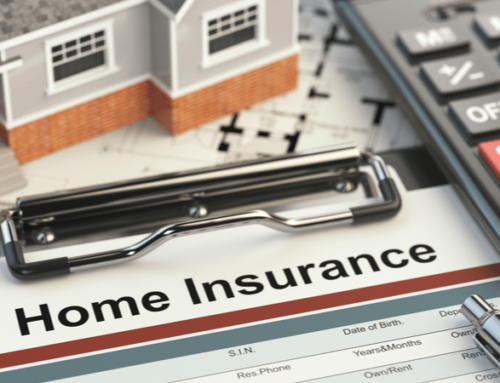Some of America’s greatest businesses have started off in a room in someone’s house or even in a garage.
Take Lincolnshire, Illinois-based office supply giant Quill, for example.
In 1956, Jack Miller and his brothers started off with a desk, a chair and two phones in “Dad’s chicken store†and then opened up their first offices in “Uncle Herb’s basement.†Today, the company is does more than a billion dollars in revenues annually.
Home-based businesses are the back bone of America’s economy. According to a survey by the Independent Insurance Agents of America (www.iiaa.org), an Alexandria, VA-based trade group, there are over 43 million home-based businesses in the United States. More than half are uninsured – and their owners aren’t even aware of the risk that they’re taking by not buying insurance specifically for their home-based business.
Many entrepreneurs mistakenly believe that their homeowner’s insurance policy is going to cut it when it comes to covering any damages that could occur to their home business. What they don’t know is that most homeowner’s policies limit loss of business property to $2,500, don’t cover losses away from the home, and exclude liability coverage for business-related activity.
THE BASICS
Most people create home-based businesses to better mange their time and money. A study by the International Telework Association & Council (ITAC) found that telecommuters—people that work from home—are 15 percent more productive and save their employers $10,000 each in reduced absenteeism and job retention costs. Yet, working from home does not mean you are exempt from the realities that face any other corporate office. Just as easily, computer equipment and software could be stolen, a client could slip and fall during an appointment and you could be held liable if your product or service mistakenly injure someone.
How can you best protect yourself and your business? First, remember that basic property insurance does not protect you from liability and property damage.
Basic property insurance policies usually cover losses caused by fire or lightning, he cost of removing property to protect it from further damage (i.e., removing inventory or equipment from a damaged building so it won’t be stolen), and â€extended perils.†*(such as windstorms, hail, explosions, riots and civil commotion, and damage caused by aircraft, automobiles or vandalism). You can also purchase optional coverage from some insurance companies that will protect your property from damage due to earthquakes and flood damage, building collapse, and glass breakage.
Next, take an inventory of your office and determine what additional insurance coverage you’ll need to insure your home-based business. Check out insurance programs available through self-employment organizations or your local Chamber of Commerce. Also, contact the insurance company that provides your home owner’s or rental policy insurance to determine the riders and additions you need to insure your home-office property.
If you business has any of the following, you should consider getting insurance coverage:
Buildings and other structures (owned or leased)
Furniture, equipment and supplies
Inventory
Money and securities
Records of accounts receivable
Improvements and betterments you made to the premises
Machinery
Boilers
Data processing equipment and media (including computers)
Valuable papers, books and documents
Mobile property such as automobiles, trucks and construction equipment
Satellite dishes
Signs, fences, and other outdoor property not attached to a building
Intangible property (good will, trademarks, etc.)
Leased equipment
Sit down with an insurance agent who can help you review the types of property you own and their uses. Some of these items will be covered in your basic homeowner’s insurance policy. Others can be covered easily by adding an endorsement or rider. And some, like money and securities , may not be covered by a standard commercial policy and may require a second, separate policy.
THE POLICY OPTIONS
There are three main types of insurance available to home-based business owners. The key is to choose the one that best fits your business’ needs. A normal homeowner’s policy covers only $2,500 worth of items used for business within the home and offers no business-related liability coverage. Yet, for as little as $250 a year you can purchase a Business Owner’s Policy (BOP) which includes both liability and property damage coverage. BOP covers:
Professional and product liability. (i.e., off-premises coverage and liability coverage for products you sell or parts you install).
Personal Liability. (i.e., bodily injury to customers or others visiting your home office).
Fire and flood protection. (i.e., general natural disaster coverage).
Computer hardware and data. (i.e, loss of data or software).
Property and Equipment. (i.e., includes theft and general business liability)
The structure housing your business is also covered with a BOP, but if your business is a home-based business, the coverage might overlap with your homeowners’ coverage.
A step down from BOP is Home Office Policy (HOP). This policy is a combination of homeowner’s and business insurance that eliminates duplicate coverage or gaps. It tends to be the optimal choice for smaller home businesses that only service a handful of visitors each week and own quality computer equipment. HOP covers most of the above in the sense of general business liability (professional and personal), property and equipment, and business income and accounts receivable. But, there is limited coverage off-site business property and that many policies don’t cover things such as floods or earthquakes. Lost income and ongoing expenses like payroll are only covered for up to one year if the business can’t operate because of damage to your home.
The final option, technically dubbed a “business pursuits endorsementâ€, offers the least protection, and isn’t recommended for most home based businesses that have customers on site or costly equipment. This policy tends to be focused more toward people that don’t own a business but sometimes do business from home.






Leave A Comment